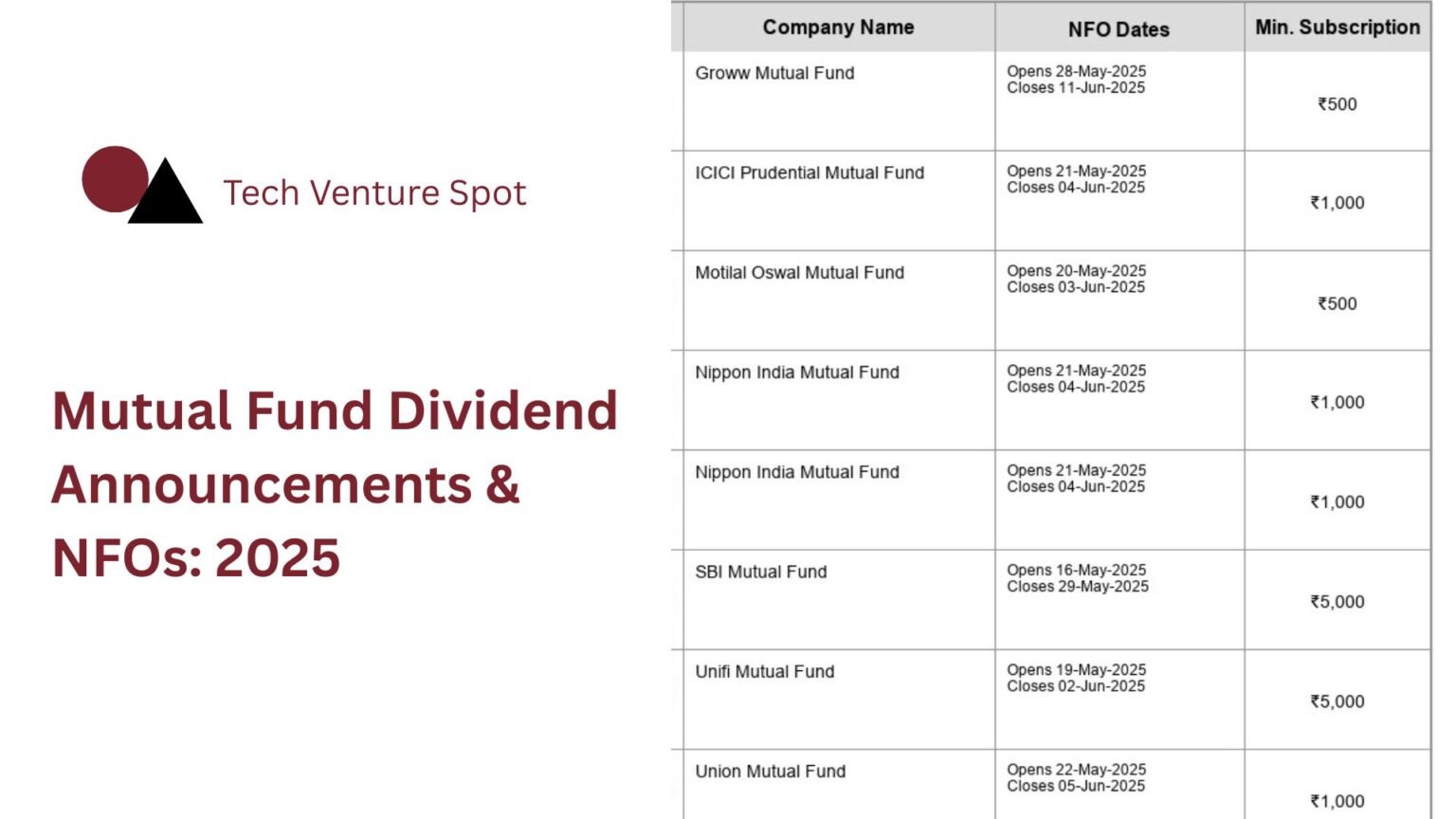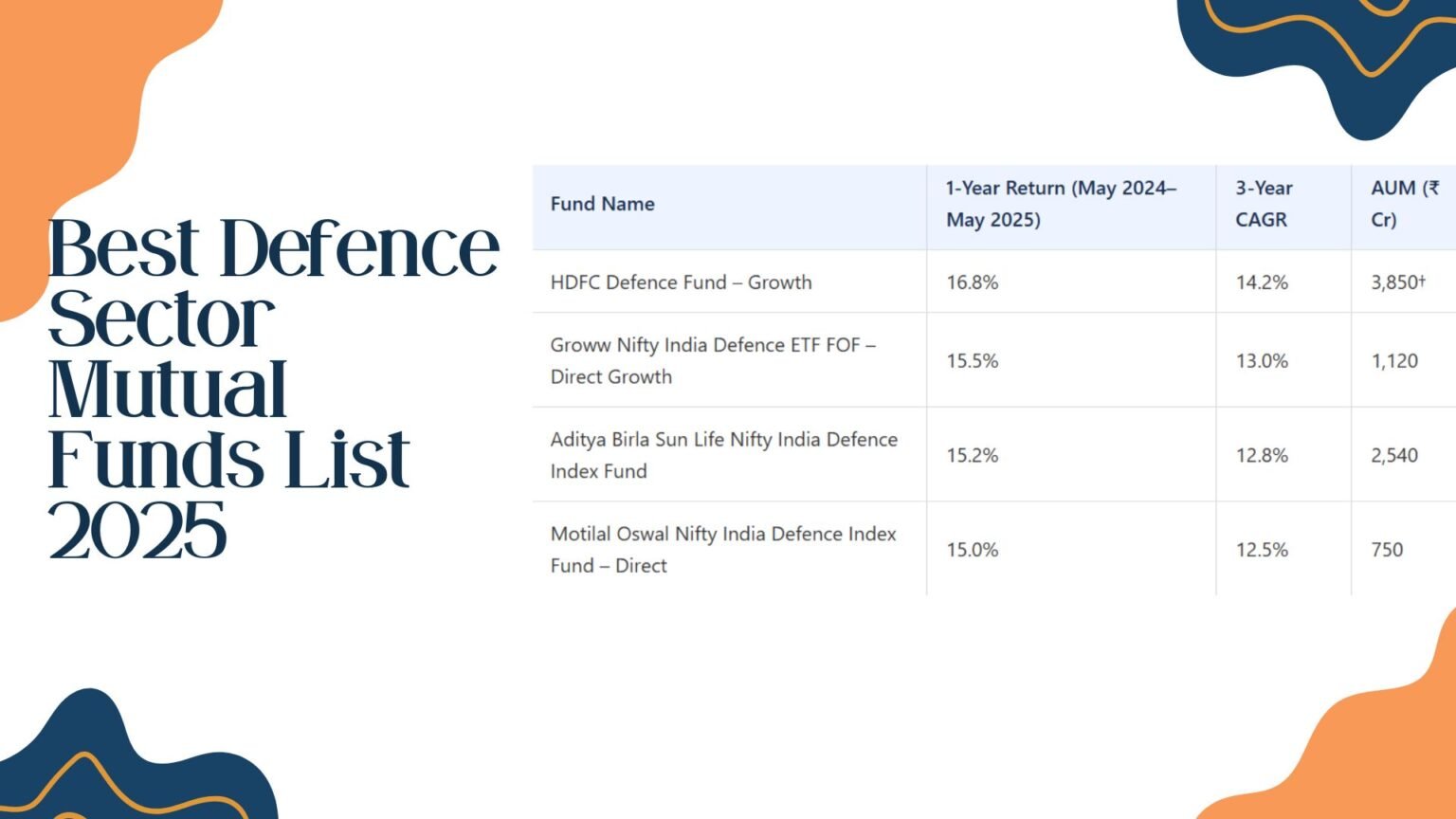
Mutual Fund Capital Gains Tax Regulation in India 2025
Investment in mutual funds is a popular means of accumulating wealth in India, but it is essential to know the tax regulations to get the best out of the money. The tax regulations on mutual fund capital gains for 2025, as introduced by the Finance Act 2023 and the Finance (No. 2) Act 2024, have made sweeping changes, particularly for hybrid and debt funds.
This article provides a simple and easy-to-follow explanation of the existing tax regulations, applicable for the financial year 2025-26 (Assessment Year 2026-27), and some tax-saving tips.
What is Capital Gains Tax?
A Capital Gains Tax is levied on the profits you earn when you redeem or sell units of mutual funds. The specific tax rate varies based on several factors:
- Type of Fund: Equity, debt, hybrid, gold, or international funds.
- Holding Period: This determines whether your profits are classified as Short-Term Capital Gains (STCG) or Long-Term Capital Gains (LTCG).
- Investment Date: The rules differ significantly for investments made before or after April 1, 2023.
- Investor Type: Rules vary for Resident individuals, Hindu Undivided Families (HUFs), or Non-Resident Indians (NRIs).
The Finance (No. 2) Act 2024, effective from April 1, 2025, has altered the tax regime for "specified mutual funds" — those investing over 65% in money market instruments or debt.
Capital Gains Tax Rates for FY 2025-26
| Category | STCG Tax Rate | LTCG Tax Rate | Holding Period for LTCG | Additional Notes |
|---|---|---|---|---|
| Equity Mutual Funds | 20% + cess (from July 23, 2024) | 12.5% (above ₹1.25 L exemption) | > 1 year | LTCG up to ₹1.25 L is exempt. Old rates until July 22, 2024 were STCG 15%, LTCG 10%. |
| Debt Mutual Funds (Purchased till Mar 31, 2023 & sold after Jul 23, 2024) |
Slab rate | 20% + cess with indexation | > 2 years | Transitional old-regime treatment for pre-April 2023 units. |
| Debt Mutual Funds (Purchased on/after Apr 1, 2023) |
Slab rate | Slab rate (No LTCG) | N/A | New regime: all gains taxed at slab rate, regardless of holding period. No indexation. |
| Hybrid Mutual Funds (Equity ≥ 65%) |
20% + cess | 12.5% (above ₹1.25 L exemption) | > 1 year | Treated like equity-oriented funds. |
| Hybrid Mutual Funds (Equity < 65%) |
Slab rate | 20% + cess with indexation | > 2 years | Taxed like debt funds; transitional rules apply. |
| Gold / International MFs | Slab rate | Slab rate (No LTCG) | N/A | Taxed at slab rate under new regime. Transitional rules mirror debt funds. |
| Fund of Funds (Equity-oriented) | 20% + cess | 12.5% (above ₹1.25 L exemption) | > 1 year | Follows equity MF rules. Debt FoFs follow debt rules. |
| ETFs (non-equity based) | Slab rate (≤ 1 year) | 12.5% (> 1 year) | > 1 year | New LTCG rate up from 10% to 12.5% (from July 23, 2024). No indexation. |
Chart: Equity Fund Tax Rate Changes (2024)
Significant Changes Applicable as of April 1, 2025
Definition of Specified Mutual Funds
These are schemes that invest more than 65% in money market and debt instruments. Gains on units of such funds purchased on or after April 1, 2023, are treated as STCG and taxed at your income tax slab rate (30% for NRIs), irrespective of the holding period.
New Tax Regulations Timeline:
- Investments on/after April 1, 2025: LTCG (held > 2 years) will be taxed at 12.5%. STCG (held < 2 years) at slab rates.
- Investments between April 1, 2023, and March 31, 2025: All gains are taxed at slab rates, regardless of the holding period.
- Investments made on or before March 31, 2023: If sold after 2 years, LTCG is 12.5% (without indexation). If sold within 2 years, STCG is taxed at slab rates.
Chart: Debt Fund Taxation Shift (Post Apr 1, 2023)
Other Key Tax Provisions
- TDS on Capital Gains: No TDS for residents. For NRIs, a 20% TDS is applicable, which can be lower based on the DTAA, provided a Tax Residency Certificate (TRC) is furnished.
- TDS on Dividends: A 10% TDS applies to both residents and NRIs if dividend income exceeds ₹5,000 in a financial year.
- Surcharge and Cess: A surcharge (capped at 15% for gains under relevant sections) and a 4% Health & Education Cess are applicable on the tax amount.
- Exemptions: Gains from the merging of mutual fund schemes, as per SEBI rules, are not taxed.
- Bonus Stripping (Section 94(8)): Losses from selling original units within 3 months before or 9 months after a bonus issue are disallowed.
How Tax on Systematic Investment Plans (SIPs) Works
For SIPs, each monthly installment is treated as a fresh investment with its own holding period. When you redeem, the First-In, First-Out (FIFO) principle is applied. This means the units you bought first are considered sold first, and their individual holding period determines whether the gain is STCG or LTCG.
Example: Calculating Capital Gains Tax
Equity Fund Example
You invested ₹2 lakh in an equity mutual fund on April 1, 2023. You sold it on July 1, 2025, for ₹3 lakh.
- Gain: ₹3,00,000 - ₹2,00,000 = ₹1,00,000
- Holding Period: Over 1 year (LTCG).
- Taxable Gain: ₹0, as the entire gain is within the ₹1.25 lakh exemption limit.
- Tax Payable: ₹0
Debt Fund Example (New Regime)
You invested ₹2 lakh in a debt fund on May 1, 2023 and withdrew it on August 1, 2025 for ₹2.5 lakh.
- Gain: ₹2,50,000 - ₹2,00,000 = ₹50,000
- Holding Period: N/A for tax classification.
- Tax: Taxed at your income slab rate. If you are in the 30% slab, your tax would be ₹15,000 + cess.
How to Lower Your Capital Gains Tax
While you cannot completely avoid tax, you can legally reduce your liability with smart planning:
-
Use LTCG Exemption: Time your equity fund redemptions to keep annual long-term gains under the ₹1.25 lakh tax-free limit.
-
Stagger Redemptions: Instead of a lump-sum withdrawal, redeem units in installments across different financial years.
-
Invest in ELSS: Equity Linked Savings Schemes offer a deduction of up to ₹1.5 lakh under Section 80C, reducing your overall taxable income.
-
Strategic Switching: Shifting from one fund to another is a taxable event. Plan switches carefully to manage tax implications.
-
Talk to a Tax Advisor: Professional guidance can help you align your investment strategy with your financial goals and tax situation.
Reporting Capital Gains in Income Tax Returns (ITR)
You must disclose all mutual fund capital gains in your ITR, typically using ITR-2 or ITR-3. Ensure you:
- Maintain detailed records of purchase and sale dates for all units.
- Report STCG and LTCG separately in the 'Schedule CG' section.
- Claim the ₹1.25 lakh LTCG exemption on equity funds where applicable.
- For NRIs, provide DTAA documents to claim lower tax rates.
Also Read: Best Corporate Bond Mutual Funds 2025 & Top 5 Gold Mutual Funds to Invest in India 2025
Frequently Asked Questions (FAQs)
What will be the tax rates of different shares of mutual funds in 2025?
Equity funds: STCG at 20% (plus cess); LTCG at 12.5% on gains above ₹1.25 lakh. Debt funds (post-April 2023 investments): All gains are taxed at your slab rate. Hybrid funds with ≥65% equity follow equity rules; others follow debt fund rules.
What is the holding period for capital gains tax?
For equity funds, LTCG applies to holdings over 1 year. For debt funds bought before April 1, 2023, LTCG applies to holdings over 2 years. For debt funds bought after that date, there is no LTCG classification; all gains are taxed at slab rates.
How does the Finance (No. 2) Act 2024 affect mutual fund taxation?
It redefines 'specified mutual funds' (>65% in debt). Gains on units bought after April 1, 2023, are taxed as STCG at slab rates, regardless of the holding period.
What is the tax on SIP investments?
Each SIP installment is a separate investment. The holding period is calculated for each one. Redemptions use the First-In-First-Out (FIFO) method to determine if gains are STCG or LTCG.
What is the taxation scenario for an NRI who invests in mutual funds?
NRIs face a 20% TDS on capital gains (reducible via DTAA with a TRC) and a 10% TDS on dividend income over ₹5,000 per year.
What can investors do to reduce their capital gains tax?
Utilize the ₹1.25 lakh LTCG exemption on equity funds, schedule redemptions strategically, invest in ELSS for 80C benefits, and consult a tax advisor.

Meet Akabari
Hello! I'm Meet Akabari, and I haven't turned back since I entered the finance industry a year and a half ago. I began by researching mutual funds and fixed deposits to see how they compared. I was shocked to see that carefully selected mutual funds can yield returns of 25–30%, outperforming typical FDs. I became passionate about all things investing after experiencing the excitement of seeing my money grow.
I expanded my toolkit to include IPOs six months ago. In order to determine which offerings are worth my time, I have read through every prospectus, asked myself the difficult questions—why this firm, why now, and what is the risk—and developed a straightforward, trustworthy framework.
I'm here to help you whether you're ready to make your first initial public offering (IPO) bid, have questions about mutual funds, or want to compare your FD to something with a greater yield. My objective? to translate technical terms into understandable insights so that, like me, you may invest with assurance and reap genuine rewards. Together, let's develop!





